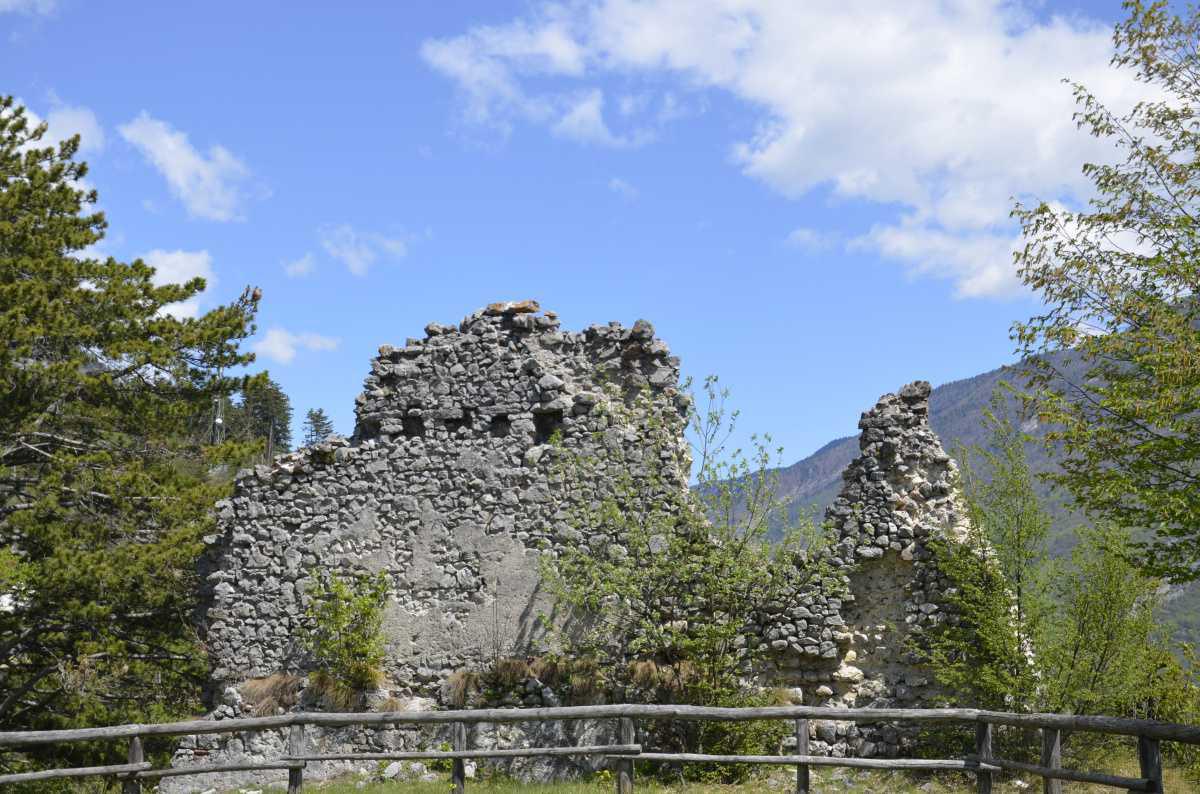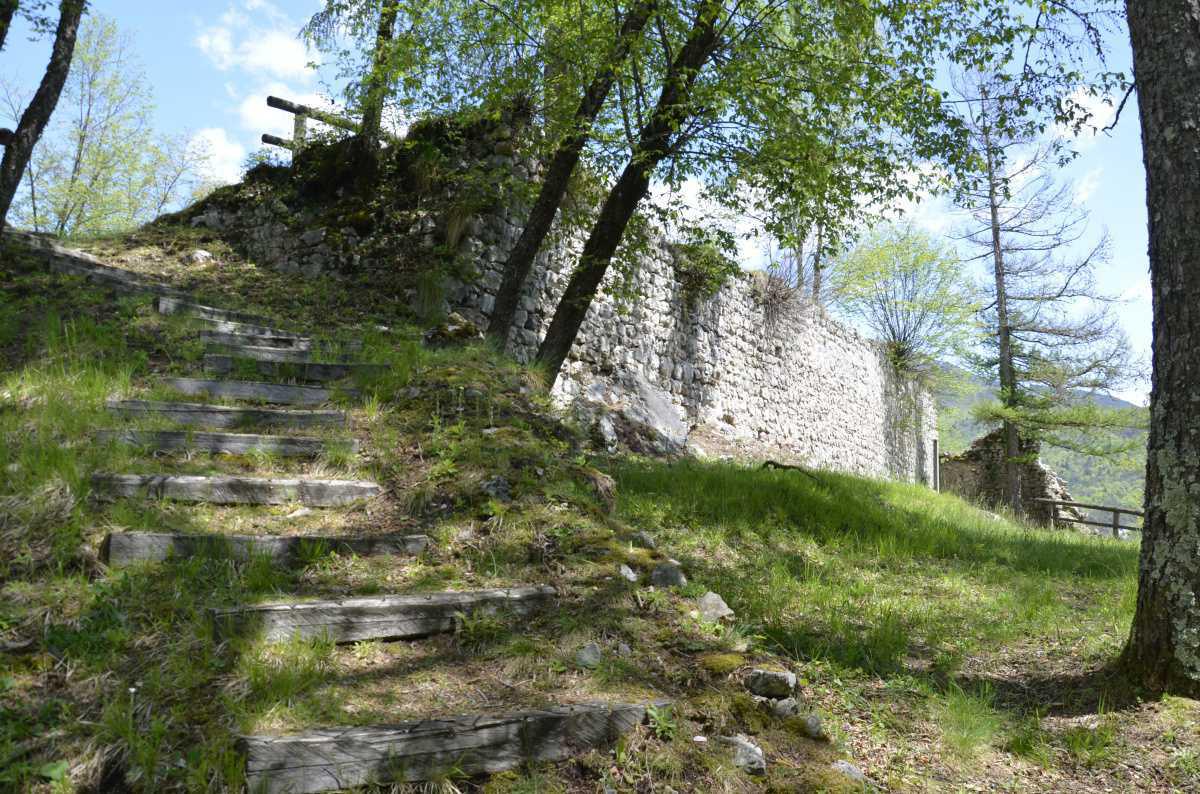
Castel Mani
San Lorenzo Dorsino San Lorenzo in banale TN
L' ingresso alle Giudicarie, cioè subito dopo la forra delle Sarche, e un incrocio di strade fra cui quella storica di San Vili hanno consigliato fin dal Primo Medioevo l'erezione di Castel Mani, da" Manes" o divinità familiari degli antenati provabilmente venerate sul dosso che sovrasta l'abitato di Glolo.
Costruito con ogni probabilità nei primi tempi del principato vescovile, ben presto viene però sopravvanzato per importanza dal vicino castello di Stenico, del quale finisce con il tempo di diventare una specie di dipendenza , con scopi a quanto pare esclusivamente militari.
Secondo la leggenda, nello stesso luogo dove sorge il maniero sarebbe esistito un castelliere celtico e poi romano. Anche il suo nome risalirebbe all'età antica: deriverebbe infatti dagli dei Manes, adorati nella zona.
La costruzione di Castel Mani risale probabilmente al XII secolo anche se i primi documenti scritti che lo riguardano sono del 1207. In quell'anno il principe vescovo di Trento investì Uldarico d'Arco del feudo legato al castello.
Castel Mani fu pesantemente danneggiato nel 1786 e nel 1797 durante l'invasione napoleonica, diventando una rovina. Nel 1830 i suoi resti furono usati come cava di pietre per la costruzione del paese.
Oggi di Castel Mani rimane un muro perimetrale all'interno di un giardino pubblico.
EN
The 'entrance to the Giudicarie, i.e., immediately after the Sarche gorge, and a crossroads including the historic one of San Vili have since the Early Middle Ages suggested the erection of Castel Mani, from" Manes" or family gods of the ancestors provably worshipped on the hump overlooking the village of Glolo.
Built in all likelihood in the early days of the episcopal principality, it was soon, however, overtaken in importance by the nearby castle of Stenico, of which it ended up in time becoming a kind of dependency , with apparently exclusively military purposes.
According to legend, in the same place where the manor stands there would have existed a Celtic and later Roman castelliere. Even its name would date back to ancient times: it would derive from the gods Manes, worshipped in the area.
The construction of Castel Mani probably dates back to the 12th century although the earliest written documents about it are from 1207. In that year the prince-bishop of Trent invested Uldarico d'Arco with the fiefdom attached to the castle.
Castel Mani was heavily damaged in 1786 and in 1797 during the Napoleonic invasion, becoming a ruin. In 1830 its remains were used as a stone quarry for the construction of the village.
DE
Der Eingang zu den Giudicarie, d.h. unmittelbar nach der Sarche-Schlucht, und eine Kreuzung von Straßen, darunter die historische Straße von San Vili, legten die Errichtung des Castel Mani aus dem frühen Mittelalter nahe, und zwar in Anlehnung an die "Manes" oder Familiengötter der Vorfahren, die wahrscheinlich auf dem Hügel oberhalb des Dorfes Glolo verehrt wurden.
Wahrscheinlich in den Anfängen des bischöflichen Fürstentums erbaut, wurde sie bald von der nahe gelegenen Burg von Stenico in ihrer Bedeutung überholt, von der sie schließlich zu einer Art Dependance wurde, die offenbar ausschließlich militärischen Zwecken diente.
Der Legende nach befand sich an der Stelle des Schlosses eine keltische und später römische Burg (castelliere). Auch der Name des Castel Mani geht auf die Antike zurück: Er soll sich von den Göttern der Manes ableiten, die in dieser Gegend verehrt wurden.
Der Bau von Castel Mani geht wahrscheinlich auf das 12. Jahrhundert zurück, obwohl die ersten schriftlichen Dokumente darüber aus dem Jahr 1207 stammen. In jenem Jahr belehnte der Fürstbischof von Trient Uldarico d'Arco mit dem zur Burg gehörenden Lehnsgut.

